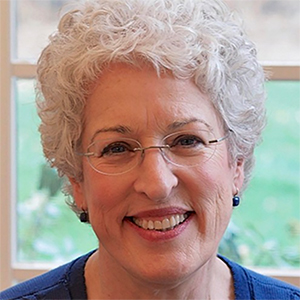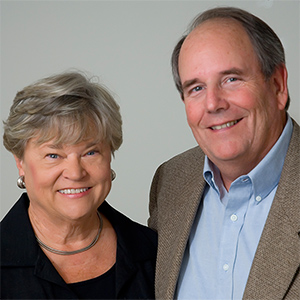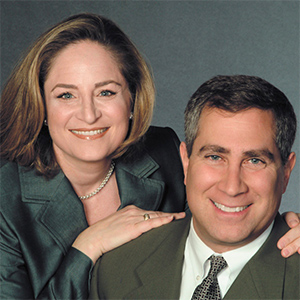Life Insurance vs. Accidental Death Insurance: Which Is Better?
Published in Home Articles
Did you know that back in 2020, 5,929 insurance companies operated in the US? Only 843 were life insurers, but their written net premiums totaled $624 billion. That’s just $28 billion less than the $652.8 billion premiums written by property and casual (P/C) insurers.
Those stats prove that Americans value life insurance, despite not being mandatory. In contrast, many P/C policies are, particularly auto insurance.
So, if you don’t have a life policy yet, you’d want to start the shopping process ASAP. That includes comparing life insurance vs. accidental death insurance. After all, they may seem alike as they both pay out a death benefit, but their coverages differ.
This guide details all the must-know facts about the two, so keep reading to discover what sets them apart.
What Is Life Insurance?
Life insurance is a contract that legally binds an insurance company and a policy owner. It’s a guarantee that the insurer pays a sum of money to the policy’s beneficiaries if the owner dies. While alive, the policyholder must pay premiums to ensure the death benefit payout.
What Is Accidental Death Insurance?
Accidental death insurance also pays out a death benefit when the policy owner dies. It often consists of two parts: the first is death by accident, the other is dismemberment. Insurers refer to such policies as accidental death and dismemberment (AD&D) insurance.
Life Insurance vs. Accidental Death Insurance
The most significant difference between life and accidental death insurance is coverage scope. The latter comes with far more limitations. However, those same restrictions also make it cheaper.
Covered Causes of Death
Life insurance policies cover almost all causes of death, so long as the policy is active. They include natural causes, such as old age, and illnesses like cancer. Some even pay out the death benefit for accidental events, homicide, war, or terrorism.
By contrast, accidental death insurance only covers death caused by accidents. Examples include road incidents, falls, drowning, and homicide, to name a few.
If you specifically buy an AD&D policy, you can get coverage for loss or loss of use of body parts or functions. An example is the loss of a limb, which more than 500 people in the US alone experience each day. Other covered incidents include speech, eyesight, and hearing loss.
Coverage Exclusions
An exclusion is any circumstance in which an insurer doesn’t pay out a death benefit.
While life insurance policies are broad in coverage, they still have a few exclusions. Suicide is one of the most common. However, it’s usually in effect only within the first two years from the policy’s purchase date.
Another cause of death often not covered by life insurance is a risky activity, such as skydiving. Still, very few deaths occur due to skydiving; in 2021, there were only ten fatalities out of 3.57 million jumps. That’s a 0.00028% death rate.
Death from substance abuse, such as alcohol or drugs, is also a life insurance exclusion. If the policy owner dies of an accidental drug overdose, the insurer pays the benefit.
That seems like a long list, but not if you compare it to the exclusions of accidental death insurance. Aside from excluding similar causes, it also doesn’t cover natural causes or illnesses.
That means insurers don’t pay if the policyholder dies because of heart disease. Likewise, the beneficiaries don’t get the death benefit if the owner passes away due to cancer. Unfortunately, both are the leading causes of death in the US, claiming 1.29 million lives in 2020 alone.
Length of Coverage
How long your life insurance covers you depends on whether you have a term or a permanent life policy.
Term life provides coverage for a pre-agreed period ranging from one to 30 years. Once it matures, such as if you outlive your policy, it ends; thus, you stop receiving coverage.
You must also keep paying term life premiums to ensure the policy doesn’t lapse. The payments can be monthly, quarterly, or yearly.
Permanent life insurance doesn’t expire, so you remain covered for as long as you live (and pay). However, you may have the option to pay for the entire policy within only 10 or 20 years. Once you’ve completed the payments, you receive lifetime coverage.
Like a term life policy, accidental death insurance also lasts for a set period and then expires. You must also keep paying its premiums for the coverage to be intact. Required premium payments are usually every month.
Medical Exam Prerequisites
Many life insurers require you to undergo a medical exam before selling you a policy. It helps them gauge your life expectancy and, from there, determine your rate.
The longer you can live, the less likely insurers have to pay out, making you an ideal policyholder. You then get awarded lower premiums.
However, some companies offer no-exam life policies, letting buyers skip the medical test. You can check out this guide to learn more about non medical life insurance options.
As for accidental death insurance policies, they often don’t require medical exams. They don’t cover illnesses, so insurers don’t need to factor in the policy buyer’s health.
An exception is if you buy a medically underwritten life insurance policy with an AD&D rider.
An AD&D rider is optional, serving as an add-on coverage to a standard life insurance policy. It’s pretty much the same as a stand-alone accidental death policy. The difference is that, with a rider, you get life insurance and accidental death coverage.
Cost
Life insurance costs more than accidental death insurance because of its broader coverage. It can be even more expensive if you get a permanent life policy with a cash value component.
However, you may still have to pay high accidental death insurance premiums if you have a risky job. Examples include professions in the logging, aircraft, oil, gas, mining, and roofing industries.
Those sectors have among the most number of workplace deaths worldwide. Insurers regard those who work in such industries as high-risk. Thus, the more dangerous your job, the costlier accidental death insurance can get.
Cash Value Component
Permanent life insurance usually includes a cash value component. You can often get it if you buy a whole, universal, or guaranteed life policy.
A policy’s cash value comes from a portion of the premiums you pay every month. That part goes toward an investment or savings portfolio. The insurer then uses the rest to maintain your life insurance policy.
The policy’s cash value accumulates over time, so long as you keep paying your premiums. Once it builds up enough, usually after ten years, you can withdraw or borrow against it. You can then spend it any way you want, so long as it’s legal.
For instance, you can use the funds to go on a much-deserved holiday. You can also spend some of it repairing your house or investing in home additions.
Some insurers also allow policy owners to use their cash value as premium payments. Policyholders may also have the option to add it to their death benefit.
Accidental death insurance doesn’t have such a nifty feature.
Which Is Better Then?
If you don’t have a life insurance policy yet, your best option is to get one, not just accidental life insurance. A good enough reason is that a person’s odds of dying due to an illness are much higher than an accident.
For example, based on 2020 statistics, a person’s likelihood of dying from heart disease was one in six. For cancer, it was one in seven.
While car crashes were among the leading causes of accidental death, the odds were only one in 101. They’re roughly the same for falls, with the likelihood being one in 102. It’s even less likely to die from a gun assault, as the odds of dying from this cause is only one in 221.
All that proves how life insurance is more valuable than accidental death insurance. If you still want to have the latter, you can add it as a rider to your standard life policy.
Before buying life insurance, though, check your employee benefits package first. After all, many employers include term life in their employee benefits package. If you have this benefit, your employer may already be shouldering all or some of your premium costs.
In that case, you can choose to buy additional coverage and add an AD&D rider, too. You can also talk to your employer about increasing your death benefit at your own expense. Another option is to buy a separate life insurance policy outside of your workplace.
Explore Your Life Insurance Options Now
There you have it, the complete guide on life insurance vs. accidental death insurance. You’ve learned the latter isn’t an alternative to the former, except if you already have a life policy. Besides, it’s easy to get an AD&D rider, and in doing so, you can enjoy the benefits of both.
As a final tip, consider buying life insurance even if you’re still young. That way, you can secure a policy with lower premiums.
Did you like this article? If so, you’re sure to love our other posts, so check them out now!




























Comments